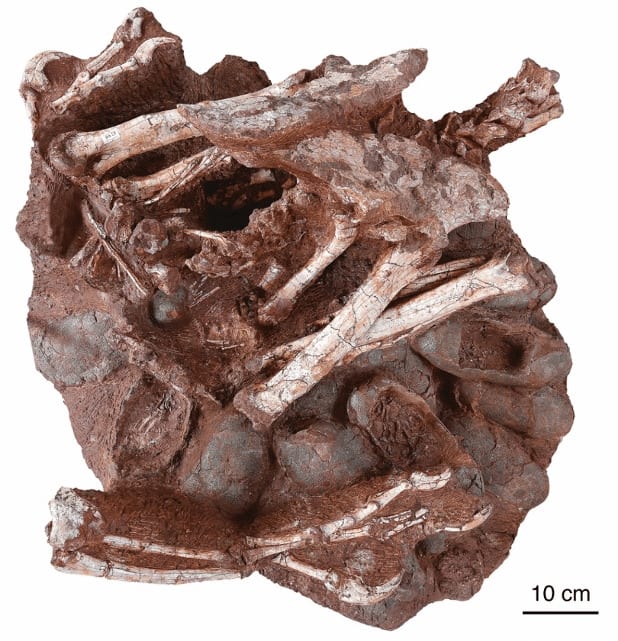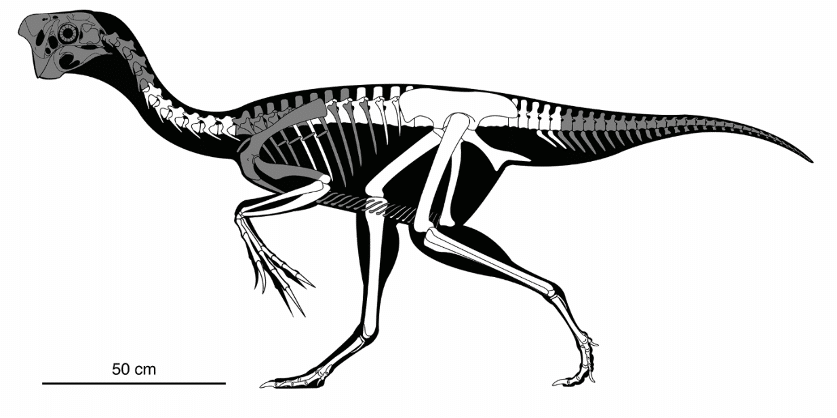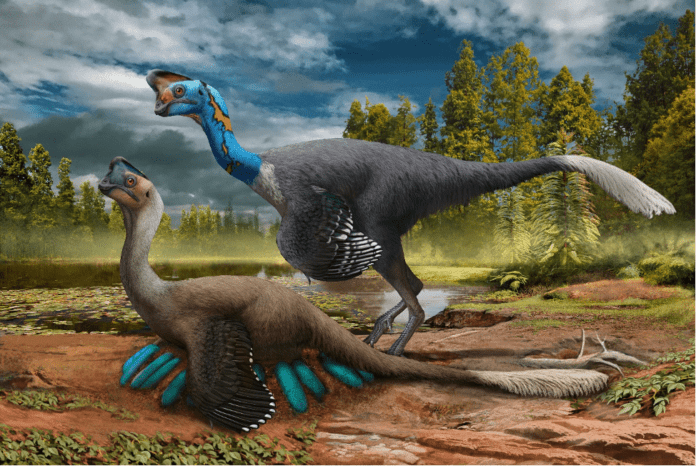Researchers have found a dinosaur fossil, an adult oviraptorosaur, which is a group of bird-like theropod dinosaurs, crouched over at least 24 eggs, in China.
Dr Shundong Bi, professor at the Indiana University of Pennsylvania explains, “Dinosaurs preserved on their nests are rare, and so are fossil embryos. This is the first time a non-avian dinosaur has been found, sitting on a nest of eggs that preserve embryos, in a single spectacular specimen.”
The dinosaur fossil

The dinosaur fossil was found from uppermost Cretaceous-aged rocks in Ganzhou City in southern China’s Jiangxi Province. The Cretaceous period is also known as the ‘Age of the Dinosaurs’, which refers to a period between 145.5 and 65.5 million years ago. Following the Jurassic period, it is the third and last period of the Mesozoic Era. Scientists have dated the first fossils of insects, modern mammal and bird species during this period.
At least 7 of the eggs still have the bones or partial skeletons of unhatched oviraptorid embryos. The fact that the adult oviraptorid was near its eggs while the embryos were in the late stage of developments leads to the conclusion that the dinosaur died while brooding on its nest.
Previous research proposals concluded that the dinosaur fossil of the oviraptorid sitting on its nest died while laying its eggs or guarding them. The results of the current study of the dinosaur fossil contradict this.
The Carnegie Museum of Natural History (CMNH) said, “The late stage of development of the embryos and the close proximity of the adult to the eggs strongly suggests that the latter died in the act of incubating its nest, like its modern bird cousins, rather than laying its eggs or simply guarding its nest crocodile-style, as has sometimes been proposed for the few other oviraptorid skeletons that have been found atop nests.”
Dr Lamanna, Associate Curator of Vertebrate Paleontology, Carnegie Museum of Natural History explains, “This kind of discovery, in essence, fossilised behaviour, is the rarest of the rare in dinosaurs. Though a few adult oviraptoridae have been found on nests of their eggs before, no embryos have ever been found inside those eggs.
In the new specimen, the babies were almost ready to hatch, which tells us beyond a doubt that this oviraptorid had tended its nest for quite a long time. This dinosaur was a caring parent that ultimately gave its life while nurturing its young.”

Oviraptorid dinosaurs have a unique reproductive structure. Their nesting habits show a biological phenomenon known as ‘hatching asynchrony’. In this, the eggs laid at the same time hatch at different times. This was also observed in the dinosaur fossil. All the embryos were found to be well developed, but some were more mature.
Another interesting characteristic of the oviraptorid dinosaur is that the adult of this species have a cluster of pebbles in the abdominal region, known as ‘gastroliths’ or ‘stomach stones’. This helps the dinosaur in digesting food. The dinosaur fossil gives the first evidence of such stomach stones, which can be further used to get future insights into the diets of these dinosaurs.
Dr. Xu, a professor at the Institute of Vertebrate Paleontology and Paleoanthropology, Chinese Academy of Sciences, says, “It’s extraordinary to think how much biological information is captured in just this single fossil. We’re going to be learning from this specimen for many years to come.”
Further Reading:


